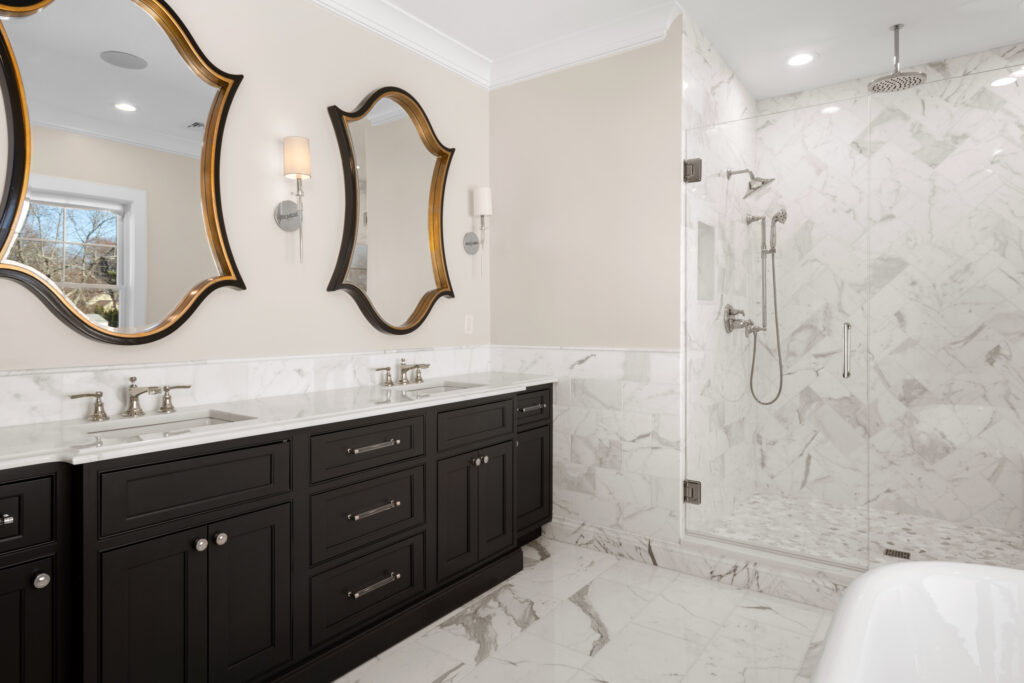Natural stone is ideal for bathroom countertops and vanities, combining beauty, utility, strength, and uniqueness that you just can’t achieve with other types. However, there are some important differences to consider between the many types of stone for bathroom surfaces. So which one will you choose: limestone or marble? Today we’ll help you compare and contrast the two so you can make the best decision possible.
Beauty
Marble may be the clear winner in the beauty and luxury department, but don’t discount limestone because it’s also attractive. Marble brings a rich history to the table as it has earned its status as the most prized building material in the ancient world. The Romans used it to construct their buildings because it was softer than other stones like granite, and would be carved more readily into works of art.
Limestone has its own place in history, forming the original facing stones of the Great Pyramid. In fact, this white limestone was often mistaken for marble.
Limestone doesn’t have quite the high-class appearance that marble does, but it does have an unmatched rustic beauty that complements many styles and applications. If you are going for a natural look for your bathroom décor, choose limestone. If you want a more luxurious finish, go with polished marble.
Cost
Limestone is more affordable than marble without a doubt. Marble is one of the more expensive decorative stones on the market. Limestone is also easier to find than marble and more readily available, which also keeps costs down.
Durability
Countertops, especially those in high-traffic bathrooms, must be durable in order to resist high usage. Both limestone and marble can react with acidic substances due to the formation of a gray or black crust made up of gypsum crystals. That means acidic substances tend to stain both types of stones. Be mindful about what spills on your counter, such as sink water, lotion, coffee, makeup and more.
In terms of hardness, marble and limestone are equal. Both stones are made up of a mineral called calcite, with a hardness of three. This form of calcium carbonate is actually one of the more abundant substances in the world. Chalk, seashells, and even fingernails are made of this mineral.
Sealing
You’ll have to seal both limestone and marble regularly because they are porous and will absorb liquid. Limestone is actually more porous than marble, and will not resist moisture as well. Limestone should be sealed more frequently than its marble counterpart as it will “drink” more sealant. Don’t get complacent about your marble, though, because it too stains easily and needs to be sealed regularly.
Contact Granite Guy
If you’re still unsure about limestone or marble for your bathroom vanity tops, contact us at 508-460-7900. Our stone fabricators in Concord will go over the pros and cons of each.

